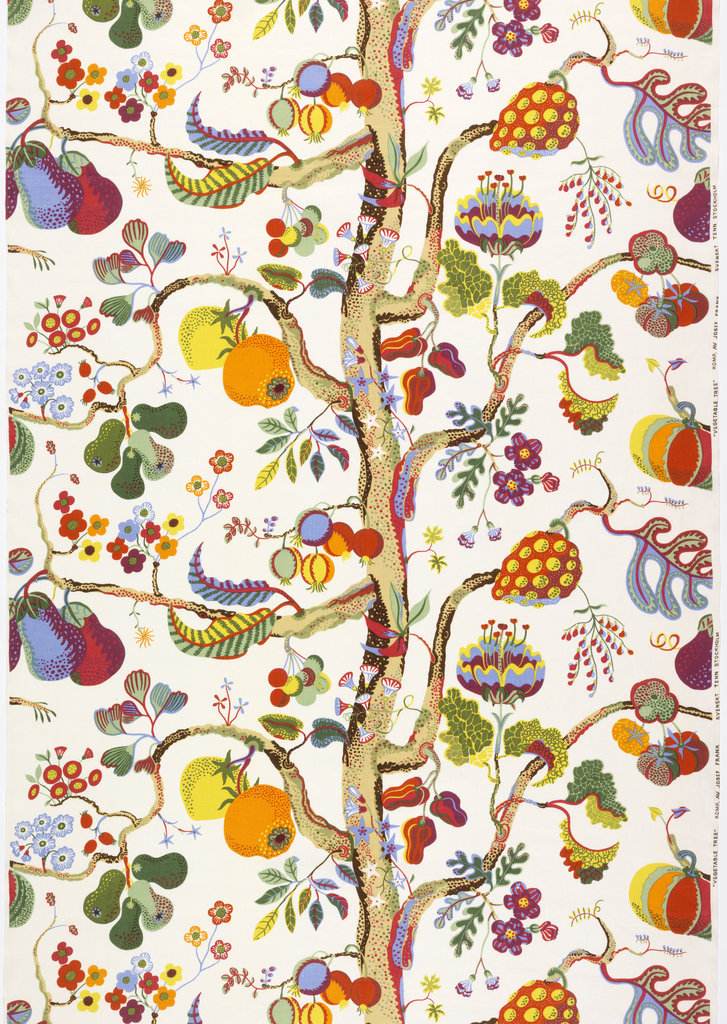When I think of modern design, a joyful outburst of color and pattern is not what springs to mind. Instead, I imagine an all-white room decorated with highly functional, minimalist chairs and couches. Everything is simple and streamlined, in sharp, crisp lines and primary colors.
How surprising, then, that Josef Frank, a man who is considered to be one the pioneers of Swedish modernism, designed this graphic patterned textile in 1944, when modern design was indeed moving towards an almost entirely functional aesthetic. While the Bauhaus and other modernist designers were using tubular steel in a hard-edged modern aesthetic, Frank, who was born in Austria but moved to Sweden just before World War II, rejected the purely functionalist design of his peers, which he saw as cold. Instead, the designer favored a free, colorful, and eclectic style of interior decoration that emphasized comfort, ease, and calm in the home. Functional furniture, to Frank, was not purely utilitarian; to him, comfort was a part of function, and he sought to imbue his furniture and textile designs with a sense of pleasure and ease.
At the height of the war, Frank fled to New York, where he designed Vegetable Tree. In a dynamic and extravagant natural scene, a tree winds its way up the center of the piece, its branches curved and sprouting an array of vibrantly colored fruits, leaves, strange vegetables, and exotic flowers. The fanciful pattern remains one of the designers’ most famous pieces, and is still in production today.
Emily Shapiro is a Masters student in the History of Decorative Arts and Design program at the Cooper-Hewitt National Design Museum/Parsons New School for Design. She worked at the Smithsonian Center for Education and Museum Studies for two years after graduating from Brown University in 2009, and is pursuing research in 20th century fashion and interiors.
